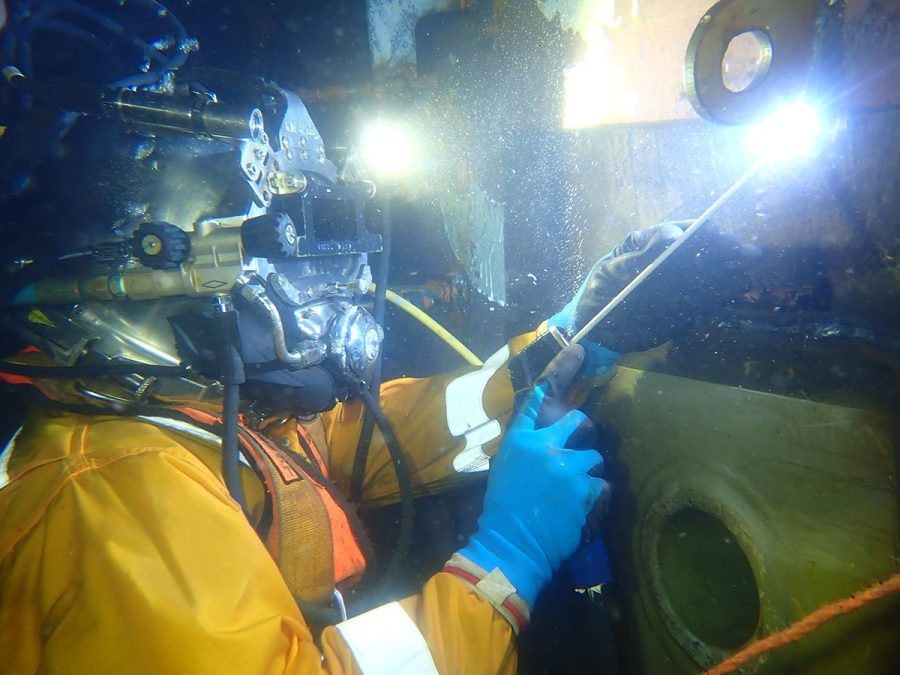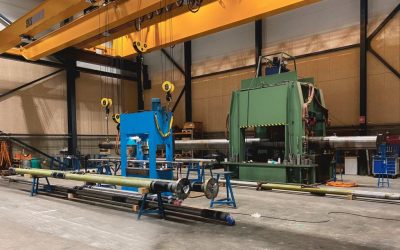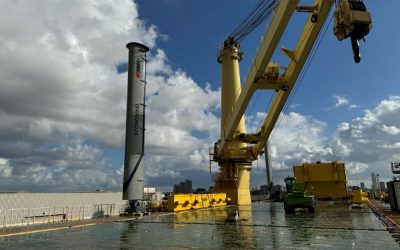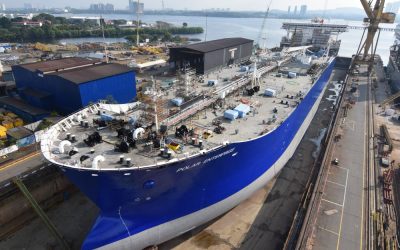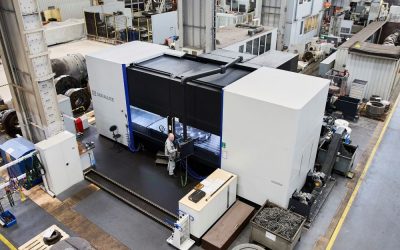Wärtsilä Underwater Repairs reports a substantial increase in enquiries for scrubber overboard repairs as well as standard repair activities
Over the past six months or so scrubber overboard repairs have been the most common type of repairs for Wärtsilä Underwater Repairs, formerly Trident. This was triggered to a large extent by the launch last year of a new pipe-in-pipe repair alternative, designed to solve corrosion problems associated with open-loop scrubber washwater discharge.
The new solution, developed by Wärtsilä in collaboration with Maersk, allows for the original overboard pipe to remain in situ while a new glass reinforced epoxy (GRE) pipe is inserted into it. This means that no metal cutting or welding is necessary. A SMO steel sleeve is inserted between the new GRE pipe and the existing steel pipe while an adhesive permanently secures the GRE pipe in place.
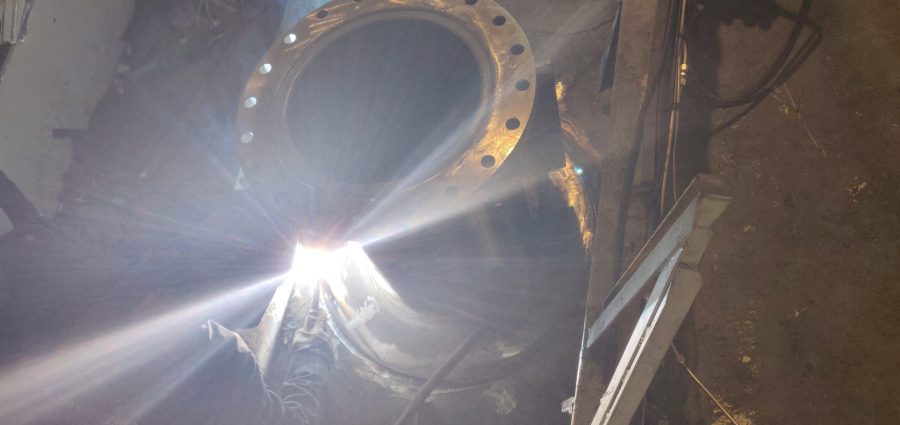
Work in progress on a scrubber overboard repair off the coast of Rotterdam earlier this year
According to managing director, William Winters, “The component pipes can be prepared and stored on board or at an engineering facility ready for fitting either during a scheduled drydocking or port call or, if necessary, whilst afloat and in operation using a cofferdam at a convenient time and location. The solution is intended for long-term protection and reduces complications associated with welding work required on pipes and sometimes hull plates, particularly in underwater repair situations.”
Recently a Wärtsilä team of diver technicians visited a vessel in Rotterdam to complete a double scrubber overboard repair. Templates were put into position to verify the hull shape ready for the correct fitment of the cofferdams. Both cofferdams were installed and secured. The old pipes were removed for the internal pipe repairs, and the newly fabricated and prepared pipes were fitted and welded into place.
In another recent project, not linked with scrubber overboards, divers undertook a propeller blade exchange. Standard safety procedures were carried out before an initial inspection of the propeller, which showed several impact damages on all tips of the blades. Winters says, “Since it was a CPP system and spare blades were readily available, the option for an underwater replacement was chosen. Our procedures involve detailed and specific steps to allow for such an exchange, even on systems that are not considered to be demountable by design. A few shifts later, the vessel was on its way again, and the damaged blades were delivered to a workshop for repairs.”
The company is in the process of preparing for an expansion of its workload. A notable investment is a new workboat Trident 1 which earlier this year entered Canary Island waters in Las Palmas. Trident 1 will be in full operation and ready to set sail with the Wärtsilä Underwater Services team once some upgrades have been completed.
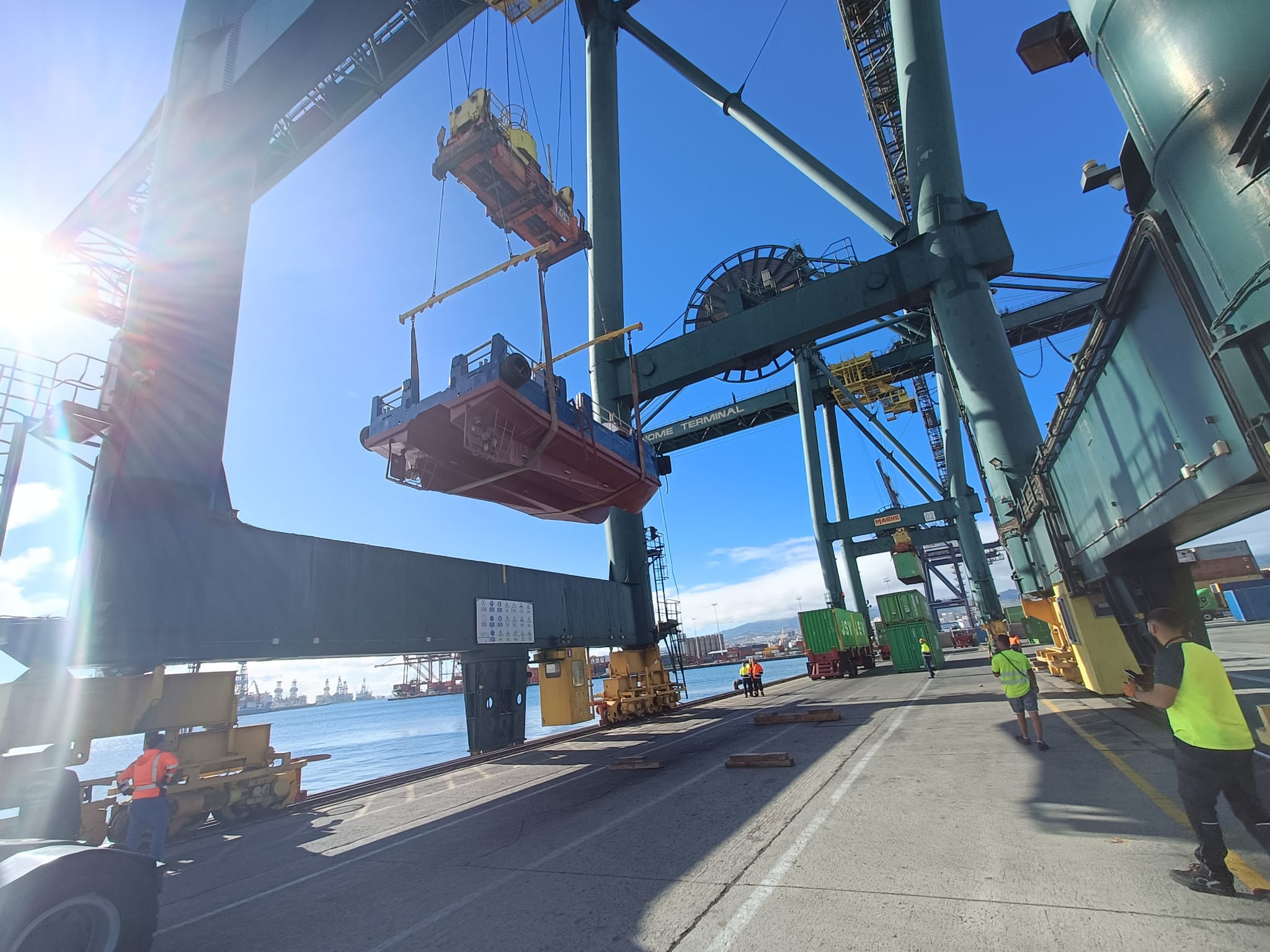
Wärtsilä Underwater Services’ new work board, Trident 1, being loaded into the water
Winters adds, “We have been, and still are, gearing ourselves up for growth. The organisation is being re-structured to be able to take the next steps that will allow us to expand while continuing to provide the service and quality our customers expect from us.”
